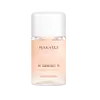What's inside
What's inside
 Key Ingredients
Key Ingredients

 Benefits
Benefits

 Concerns
Concerns

 Ingredients Side-by-side
Ingredients Side-by-side

Water
Skin ConditioningPoloxamer 184
EmulsifyingPhenoxyethanol
PreservativePEG-7 Glyceryl Cocoate
EmulsifyingSorbitol
HumectantDecyl Glucoside
CleansingPropylene Glycol
HumectantDisodium EDTA
Lactobacillus
Skin ConditioningAloe Barbadensis Leaf
MaskingSodium Hyaluronate Crosspolymer
HumectantSodium Hyaluronate
Humectant1,2-Hexanediol
Skin ConditioningSodium Acetylated Hyaluronate
HumectantHyaluronic Acid
HumectantHydrolyzed Glycosaminoglycans
HumectantHydrolyzed Sodium Hyaluronate
Skin ConditioningHydrolyzed Hyaluronic Acid
HumectantWater, Poloxamer 184, Phenoxyethanol, PEG-7 Glyceryl Cocoate, Sorbitol, Decyl Glucoside, Propylene Glycol, Disodium EDTA, Lactobacillus, Aloe Barbadensis Leaf, Sodium Hyaluronate Crosspolymer, Sodium Hyaluronate, 1,2-Hexanediol, Sodium Acetylated Hyaluronate, Hyaluronic Acid, Hydrolyzed Glycosaminoglycans, Hydrolyzed Sodium Hyaluronate, Hydrolyzed Hyaluronic Acid
Water
Skin ConditioningHexylene Glycol
EmulsifyingPoloxamer 184
EmulsifyingDecyl Glucoside
CleansingGlycerin
HumectantDisodium Cocoamphodiacetate
CleansingAllantoin
Skin ConditioningPhenoxyethanol
PreservativePEG-40 Hydrogenated Castor Oil
EmulsifyingCaprylyl Glycol
EmollientSodium Chloride
MaskingCitric Acid
BufferingHyaluronic Acid
HumectantSodium Hyaluronate
HumectantHydrolyzed Hyaluronic Acid
HumectantDisodium EDTA
Sodium Citrate
BufferingParfum
MaskingButylene Glycol
HumectantEthylhexylglycerin
Skin ConditioningRosa Damascena Flower Water
MaskingPentylene Glycol
Skin Conditioning1,2-Hexanediol
Skin ConditioningOctanediol
Water, Hexylene Glycol, Poloxamer 184, Decyl Glucoside, Glycerin, Disodium Cocoamphodiacetate, Allantoin, Phenoxyethanol, PEG-40 Hydrogenated Castor Oil, Caprylyl Glycol, Sodium Chloride, Citric Acid, Hyaluronic Acid, Sodium Hyaluronate, Hydrolyzed Hyaluronic Acid, Disodium EDTA, Sodium Citrate, Parfum, Butylene Glycol, Ethylhexylglycerin, Rosa Damascena Flower Water, Pentylene Glycol, 1,2-Hexanediol, Octanediol
 Reviews
Reviews

Ingredients Explained
These ingredients are found in both products.
Ingredients higher up in an ingredient list are typically present in a larger amount.
1,2-Hexanediol is a synthetic liquid and another multi-functional powerhouse.
It is a:
- Humectant, drawing moisture into the skin
- Emollient, helping to soften skin
- Solvent, dispersing and stabilizing formulas
- Preservative booster, enhancing the antimicrobial activity of other preservatives
Decyl Glucoside is a glucose-based surfactant and emulsion stabilizer. It is created by reacting glucose with the fatty acids from plants.
Surfactants help clean the skin by trapping oil, sebum, and dirt to be washed away. As an emulsion stabilizer, it stabilizes the ingredients in a product by preventing them from separating.
This ingredient is biodegradable and non-toxic. This ingredient is commonly found in baby shampoos.
Decyl Glucoside is sometimes used to stabilize the UV filter Tinosorb.
Learn more about Decyl GlucosideDisodium EDTA plays a role in making products more stable by aiding other preservatives.
It is a chelating agent, meaning it neutralizes metal ions that may be found in a product.
Disodium EDTA is a salt of edetic acid and is found to be safe in cosmetic ingredients.
Learn more about Disodium EDTAHyaluronic acid is naturally found in healthy skin. It is a humectant, meaning it draws moisture to your skin.
This ingredient helps hydrate, soothe, and protect the skin.
What makes hyaluronic acid so hydrating? It has the capacity to bind or hold large amounts of water.
Fun fact: It is already naturally found in our bodies, such as the fluids of our eyes and our joints.
Studies find this ingredient to have anti-inflammatory and anti-microbial properties. This can help speed up wound-healing.
Hyaluronic acid can be irritating if the molecule has a low-molecular weight, or if the molecules are small.
One study found low-molecular weight hyaluronic acid to be pro-inflammatory, meaning some people may experience irritation. This is because our bodies use hyaluronic acid in the wound-healing process to signal to our bodies, via irritation, that something needs healing.
The same study found high-molecular weight hyaluronic acid to be anti-inflammatory.
These are some other common types of Hyaluronic Acid:
Learn more about Hyaluronic AcidHydrolyzed Hyaluronic Acid is a form of hyaluronic acid. It is created by the hydrolysis of hyaluronic acid with a high molecular weight. Once created, Hydrolyzed Hyaluronic Acid has a low molecular weight.
Low molecular weight HA has been shown to hydrate and increase elasticity of the skin. Increasing elasticity is also associated with reduction of wrinkle depth.
One study found topical low molecular weight hyaluronic acid may be considered for the treatment of rosacea in the adult population. However, we always recommend speaking with a professional about your skin concerns.
Hyaluronic acids are a humectant. This means they draw moisture from the air. Hyaluronic acids help moisturize, soothe, and protect the skin.
Read more about other common forms of hyaluronic acid:
Learn more about Hydrolyzed Hyaluronic AcidPhenoxyethanol is a preservative that has germicide, antimicrobial, and aromatic properties. Studies show that phenoxyethanol can prevent microbial growth. By itself, it has a scent that is similar to that of a rose.
It's often used in formulations along with Caprylyl Glycol to preserve the shelf life of products.
Poloxamer 184 is a surfactant and emulsifier made from polyoxyethylene and polyoxypropylene units.
It allows ingredients that don't normally mix (like water and oil) to blend together and stay stable; this makes it easier for cleansers and makeup removers to grab onto dirt, oil, and makeup to be rinsed away more easily.
Sodium Hyaluronate is hyaluronic acid's salt form. It is commonly derived from the sodium salt of hyaluronic acid.
Like hyaluronic acid, it is great at holding water and acts as a humectant. This makes it a great skin hydrating ingredient.
Sodium Hyaluronate is naturally occurring in our bodies and is mostly found in eye fluid and joints.
These are some other common types of Hyaluronic Acid:
Learn more about Sodium HyaluronateWater. It's the most common cosmetic ingredient of all. You'll usually see it at the top of ingredient lists, meaning that it makes up the largest part of the product.
So why is it so popular? Water most often acts as a solvent - this means that it helps dissolve other ingredients into the formulation.
You'll also recognize water as that liquid we all need to stay alive. If you see this, drink a glass of water. Stay hydrated!
Learn more about Water